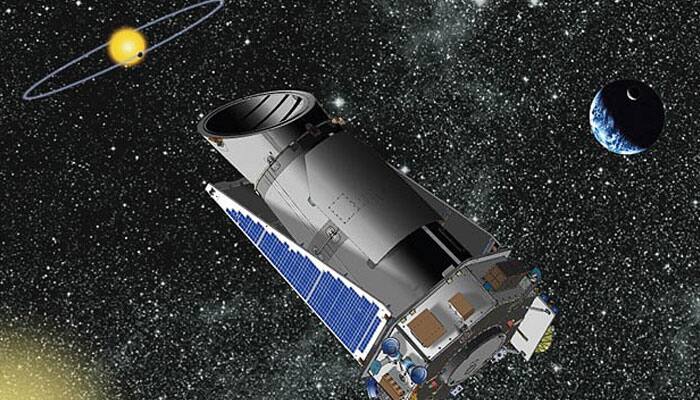Washington: Using NASA's Kepler Space Telescope, astronomers claimed to have spotted a bizarre star that looks like something an alien civilisation would have built.
The strange star which they named it KIC 8462852 lies just above the Milky Way between the constellations Cygnus and Lyra.
The star first attracted the attention of astronomers in 2009 when the Kepler Space Telescope identified it as a candidate for having orbiting Earth-like planets.
Astronomers, including citizen scientists from the Planet Hunters crowdsourcing program, report in a research paper: “Over the duration of the Kepler mission, KIC 8462852 was observed to undergo irregularly shaped, aperiodic dips in flux down to below the 20 percent level.”
Describing the phenomenon in the research paper, they pointed out that the star is unique and had seen nothing like it.
KIC 8462852 was emitting a stranger light pattern than any of the other stars in Kepler’s search for habitable planets.
“We’d never seen anything like this star,” Tabetha Boyajian, a postdoc in the astronomy department who oversees Planet Hunter at Yale was quoted as saying to The Atlantic. “It was really weird. We thought it might be bad data or movement on the spacecraft, but everything checked out.”
As per a report from IFL Science.com, the pattern of dips indicates that the star is orbited by a large, irregular-shaped mass. If it were orbiting a young star, this mass might be a protoplanetary disc, but KIC 8462852 is not a young star, it added.
Meanwhile, researchers from UC Berkeley’s SETI Institute think this could be a sign of alien technology.
Boyajian is working with SETI and Jason Wright, an astronomer from Penn State University, to develop a proposal to observe the star with NRAO’s Green Bank Telescope to search for radio waves.
The first observations could take place in January, with a potential follow-up planned for next fall.
And if they detect something incredible, the researchers could expect to follow-up with the Very Large Array (VLA) straight away.
Kepler is likely to observe KIC 8462852 in May 2017, when the mass is expected to transit the star again.
















